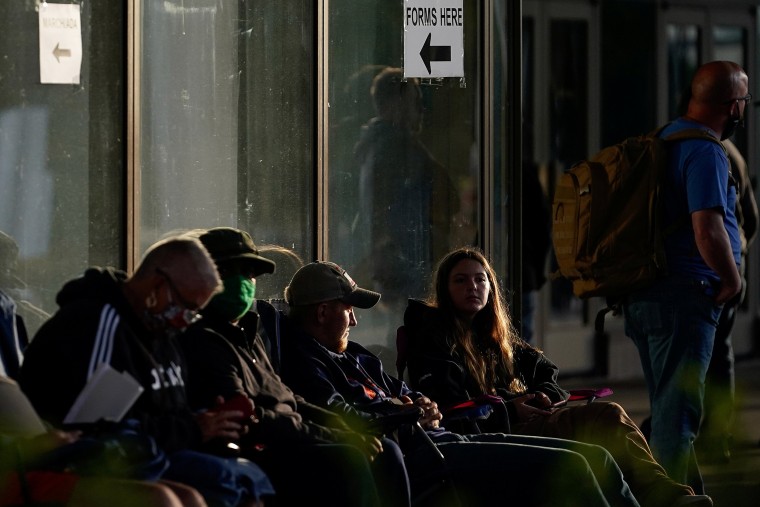The number of Americans filing initial weekly jobless claims totaled 787,000 last week, as consumers and businesses continue to navigate restrictive measures amid a rapid increase in coronavirus infections.
After a grueling year of job losses, economists had predicted a total of 835,000 claims for the week ended Dec. 26, an increase from the previous week's revised tally of 806,000.
Despite new vaccines and the passage of a federal emergency aid package, new applications for unemployment benefits remain at four times that of the pre-pandemic average — but well below the March peak of almost 7 million claims.
Lawmakers this week approved an extension to emergency unemployment benefits, with President Donald Trump agreeing late Sunday night to extend relief payments of $300 a week through March 14. However, the number of continuing claims — people who cannot find a job and receive ongoing unemployment benefits — remains just above 5 million, which is at least three times its usual level, underscoring the nation's sluggish labor market recovery.
The broader economy is showing signs of weakening at the end of a challenging year, with both consumer spending and consumer confidence down last month as shoppers continue to stay home, curbing spending on items such as cars, clothing and dining out. New home sales for November also fell to a five-month low.
"The bar couldn’t be any lower, but after a tough start the economy should have a much better 2021," said Mark Zandi, chief economist at Moody’s Analytics. "If the rollout of the vaccines sticks roughly to script, the pandemic should be receding and the economy ramping up in the second half of the year. There is a substantial amount of pent-up demand for all of the activities consumers have been avoiding since the pandemic hit, and higher-income households have considerable financial firepower to ramp up their spending."
However, with 10 million jobs yet to be recovered, the economy is not expected to hit its stride until well into 2023. More than two in five households have not recovered their lost income as of December, according to a Bankrate.com survey.
"The bulk of the lost jobs are not coming back," Zandi said. "While tourism should eventually fully recover, business travel likely won’t. Many businesses, particularly larger multinational companies, have fully embraced Zoom and similar technologies. Brick-and-mortar retail jobs lost in the pandemic to online competitors are also forever gone."
The focus now turns to the closely watched monthly employment report from the Bureau of Labor Statistics, due out next Friday, which some economists say could show the first decline in jobs added to the economy since April.

